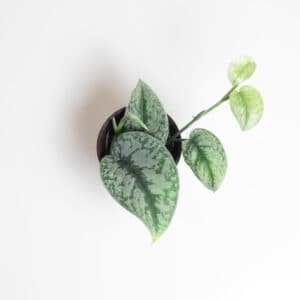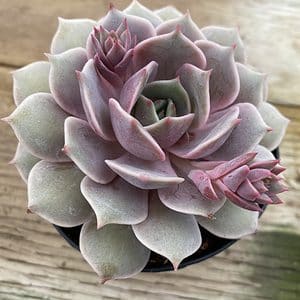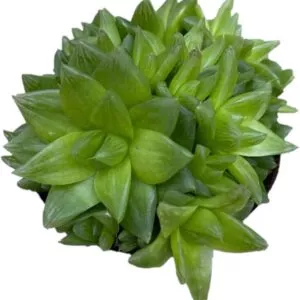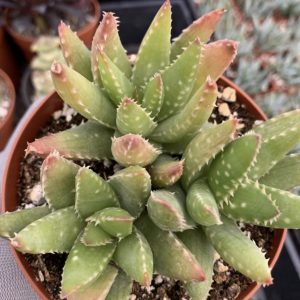No products in the cart.
Table of Contents
The Calathea ornata is a sight to behold when you see it. So, what do you think will this plant make a great addition to your tropical plants collection?
Of course, it will. Maybe you already have one or are interested in getting this pinstripe plant. Well, it helps to know how to care for Calthea ornata, right?
We have got you covered, as we have all the care info here to make this prayer plant a statement piece in the home.
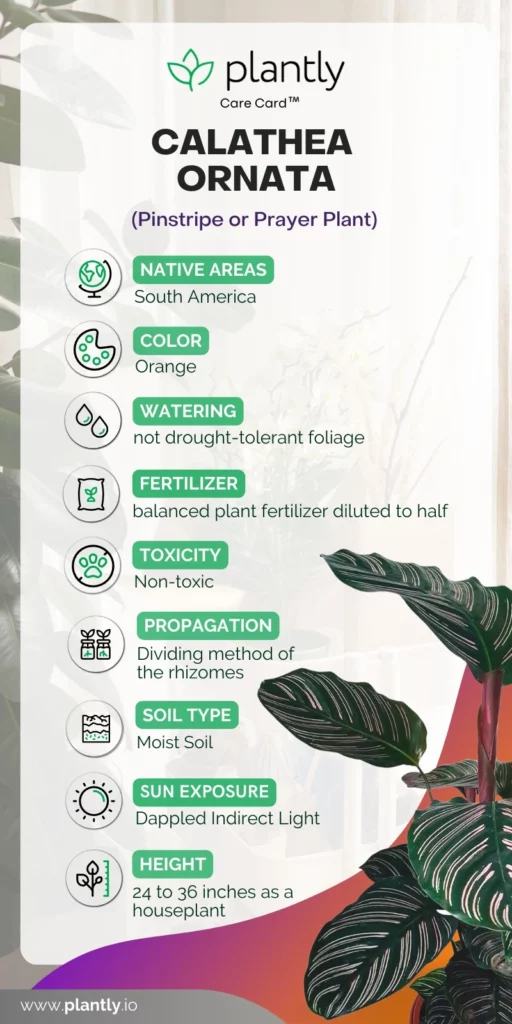
Calathea Ornata Pinstripe Origin
Calathea ornata has colorful patterned leaves, making for a pretty addition to any houseplant collection. The Calathea is known as the prayer plant, but this specific one’s common name is the pinstripe plant.
It has wide, pointed, dark green leaves with thin stripes in a pink or creamy white, hence the pink pinstripe plant. While this outdoor plant is not easy to keep happy, you can help it thrive with essential care tips.
Another fascinating thing is this beautiful plant is native to Central and South America and will need a bright spot with indirect sunlight to thrive.
Care For Calathea Ornata Plants

The care for Calathea is not a difficult one. Do not believe us, then stay longer, as you will start believing. The houseplant has attractive leaves but does not often flower inside a home.
The dark green leaves look stunning with their pink stripes—the veins one can class as feathered with a pink hue. The underside is more purple and grows upright between March and October.
Unfortunately, your plant’s pink stripes will turn whitish as it ages, but the good news is you can propagate the plant easily, as seen later on.
Calathea Ornata Bright Indirect Light

So, where do you place prayer plants indoors to keep them thriving? The tropical houseplant prefers bright indirect light compared to direct light. So, place them near a sunny window with sheer curtains.
Indirect light is best to keep the striking contrast as too much sunlight will burn the leaves, while with too little light, your new plants will develop stunted growth.
It helps to keep her in shaded areas by your other plants as it grows in the rainforest. So, if you’re uncertain your plant is standing in the right place, keep an eye on the leaves.
Choose an east-facing window with shade from the curtains. Remember, they thrive in their natural habitat with surrounding trees; indirect sunlight is much appreciated with this gorgeous plant.
Temperature & Humidity
Location plays a significant role when choosing the best spot with light to keep your plant happy. It needs the right temperature. Choose a place with a temp between 65° to 85° F. The Pinstripe Calathea does not enjoy temperatures dropping below 60°F—so no cold drafts, venting systems, or Air-conditioners.

Your Pinstripe Calathea loves plenty of humidity. You can mist her twice weekly using room-temperature water for adequate moisture levels. The best place for this houseplant is in your bathroom or kitchen, with bright indirect light.
A fact is that the whole Calathea genus prefers a humid environment. Alternatively, you can place a humidifier to keep track of the levels. When it comes to Calathea Ornata and humidity, it is essential. A pebble tray will help prevent crispy leaf edges if you do not have a humidifier.
Pebble trays are an affordable option as you can DIY one. But do not let the evergreen perennial sit in the water, as it leads to root rot.
Watering Needs
Calathea ornata prefers moist soil and must not dry out, nor should you oversaturate your tropical plants. Your prayer plants are not drought tolerant, so keep the soil lightly moist, allowing the soil to dry out between watering. Doing this helps prevent the growth of mold and fungus.
Even prolonged periods of completely dry soil result in crispy leaves, while watering the plant regularly and leaving the soil saturated will kill your plants. Preferably, you can use distilled water or even better rainwater, and if you must use tap water, leave it standing for 24 hours to allow the chlorine and salts to evaporate.
So, remember, keep the soil moist but not soggy, and ensure the plastic nursery pot you receive it in has a large drainage hole. Providing enough drainage will allow excess water to drain and ensure healthy roots. Thus, water your plants when the soil starts to dry.
Fertilizer Requirement
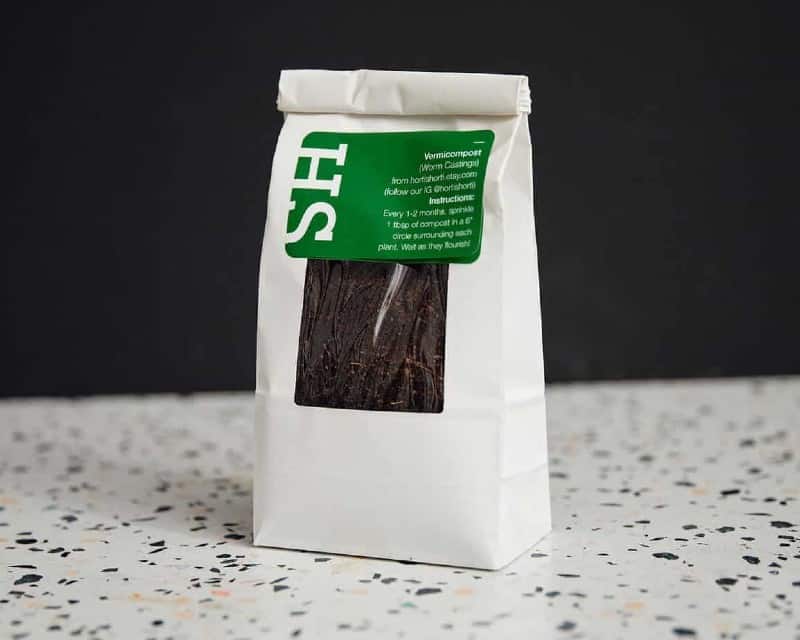
Your prayer-plant enjoys a monthly feed using a balanced plant fertilizer diluted to half or a quarter strength during the growing season. Before feeding your Pinstripe Calathea, water it as it prevents burns on the root system. You can stop feeding your plant during winter as the growth slows down.
We have a secret about feeding the Calathea. Do you want to know? We use organic fertilizer by adding compost to the soil when potted. It gives your Calathea Ornata a slow-release feeding. You can do this by replacing 10% of the peat using compost.
Or fill a bucket with compost and water, leaving it steep for a couple of days to use as a liquid fertilizer. Then, strain the liquid and dilute it in half to make compost tea.
Potting Your Pinstripe Calathea
You must agree that the Pinstripe plant is a princess, as it does not like repotting. You only need to do this when the roots have grown through the drainage holes every two years. Choose a larger pot that is one size bigger.
Clean the container and fill it up with fresh soil as described next. Once transplanted, place your tropical plant in less light until new growth appears. Please do this in spring and summer when it grows.
Best Potting Mix

Calathea ornata grows in soil that retains moisture but does not leave it soggy. For the best results, use organically rich, well-draining soil. Also, ensure the drainage holes are enormous enough to release excess water.
We recommend rich organic matter such as African violets, or you can mix one perlite with two peat. As mentioned, replace some of the peat with compost. You can use coarse sand, coco coir, orchid bark if you prefer not to use peat.
Propagating Calathea Ornata
Compared to other plants, the Calathea ornata propagates easily through division using a healthy or mature plant. The best time to do this is during the growing season when repotting them. Here are some simple steps to achieve this:
Tip your Calathea ornata out of the pot and examine the roots.
Loosen the soil around the root ball and avoid disturbing the roots.
Then, inspect the root ball and look for clumps of roots around the edges with leaves attached.
Pull as many of them as you can away to propagate your plant.
Before you start to propagate Calathea ornata, fill up some small pots halfway with fresh soil.
Plant your divisions and fill the containers with more soil, keeping it at the same soil line as the parent plant.
Keep your Calathea ornata in moist soil in bright light but not direct sunlight.
To keep the humidity level, you can cover them with a plastic bag and remove it when you notice new growth.
Growth Zone
It is important to check your USDA hardiness zone first. The good news is if you live in Zone 10, you’re lucky to grow this plant inside or out.
Calathea Ornata Varieties and Similar Plants
When it comes to Calathea, other varieties need the same care as your Calathea Pinstripe.
Calathea Orbifolia

This is a gem if you can place it in your home. It is a grabber of attention with huge leaves and metallic patterns of silver. Calathea orbifolia appreciates high humidity for their gorgeous foliage not to drop.
Calathea Warscewiczii

Is a tender evergreen, and we have failed to pronounce the name many times. So for us, it is the Calathea Jungle Velvet that is easier around the tongue to say. It has lanced-shaped leaves of velvet and dark green with a lighter green banding making it unique.
Calathea Makoyana
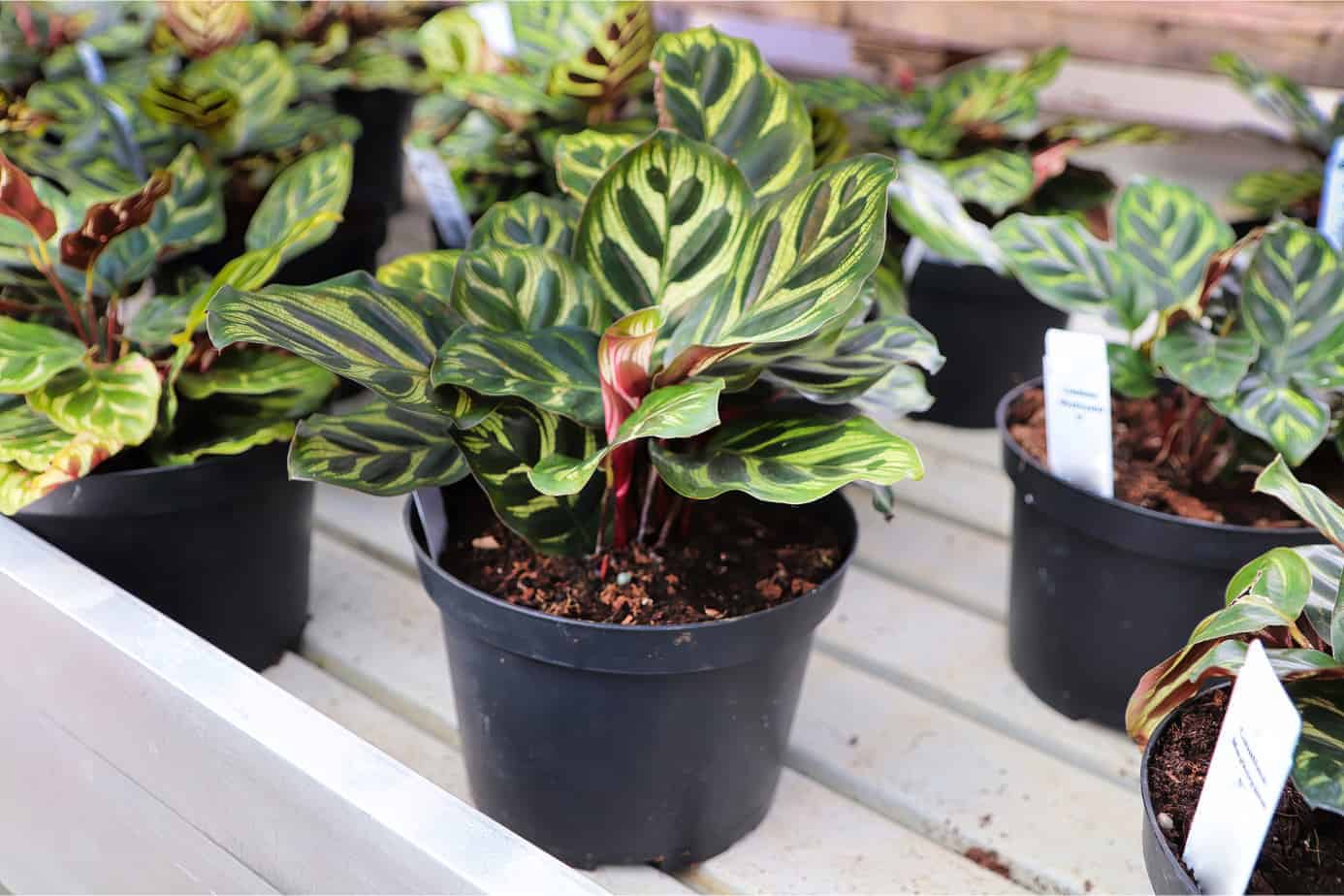
Compared to other Calathea plants, it has contrasting green with purple foliage, making it a great plant to brighten up your living space. The best part is we can even help you care for this variety.
Calathea Ornata Diseases & Pests
The main concern for Calathea Ornata care is keeping it free from Spider Mites, as seen in the image below.

The voracious eaters suck out all the life of your Calathea plants. Oh my no, it will kill your plant. But the good news is you can save it with the proper plant care. You can do the following:
Give your Ornata a good old shower by gently hosing it down. Then, wash both sides of the leaves.
Take some cotton balls soaked in rubbing alcohol and clean both sides of the leaves. The substance will kill the insects.
Now, fill a spray bottle with water and dishwashing detergent to spray over your plant. Alternatively, you can use some neem oil diluted with water in a spray bottle.
The method is one of the best ways to treat these critters, or you can bring in ladybugs, which are also beneficial for most pests. Remember to dilute anything from Neem and alcohol to detergents to prevent causing damage to the leaves.
Frequently Asked Questions
The leading cause is to do with your plant trying hard to conserve water or even protect itself. Look for issues with too little humidity, sunlight, and underwatering. To keep Calathea healthy, try to avoid tap water and keep the soil lightly moist.
When you notice your plant has brown leaves, it can result for different reasons. It can be from standing in a cold draft, low humidity, or too much direct sunlight. The best is to check each of these conditions to care for Calathea ornata.
The Calathea ornata is one of the safest plants in the home as it is non-toxic to humans and pets.
The Calathea ornata can reach up to three feet tall and wide, making it a beautiful plant in the home.
You can use sterilized pruners to remove any brown or damaged leaves on your plant. Cut the leaves down to the base of the plant.
Yellow leaves indicate that your plant is receiving too much water and can also be a sign of root rot. We recommend feeling the soil to see if it is soggy and cut back on the watering until you find it dry.
Whether you want to buy, sell or simply reach out to other plant enthusiasts, Plantly is the right place to be!
In stock In stock In stock In stock
$20.00
Sold By:
Gardengineering
$25.00Scindapsus Pictus Exotica | Philodendron Silver | Satin Pothos
Rated 4.96 out of 5 based on 24 customer ratings00
Sold By:
Gardengineering
$24.99
Sold By:
Succulent Oasis
$30.00Medium Succulent Plant ‘Angel Kissed’.
Rated 4.84 out of 5 based on 352 customer ratings00
Sold By:
Succulent Oasis
$12.00
Sold By:
Beauties & Beasts
Succulent -Haworthiopsis cymbiformis
Rated 4.83 out of 5 based on 24 customer ratings00
Sold By:
Beauties & Beasts
$14.00
Sold By:
Cacti and Exotica
Aloe Crosby
Rated 4.98 out of 5 based on 59 customer ratings00
Sold By:
Cacti and Exotica
